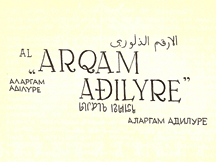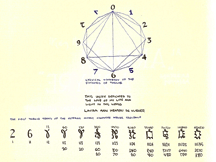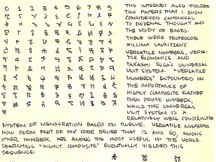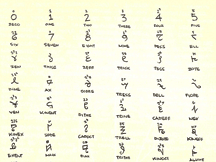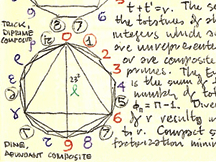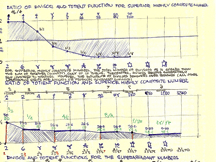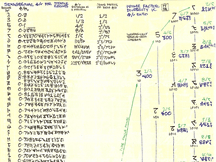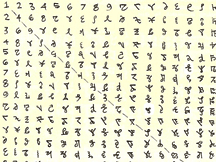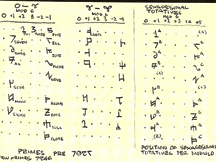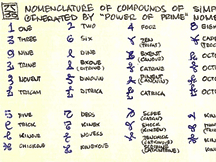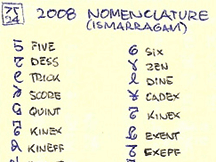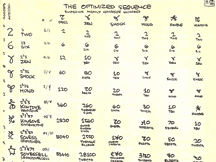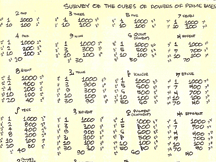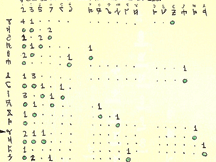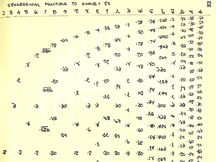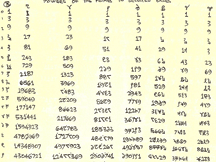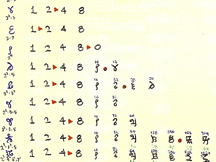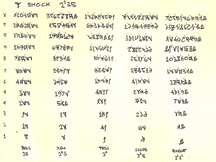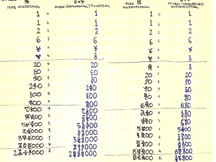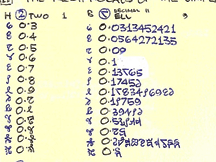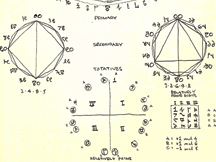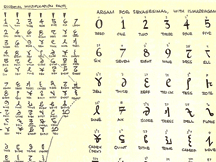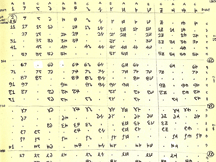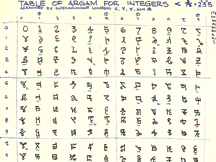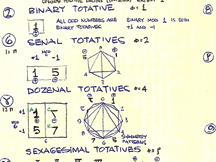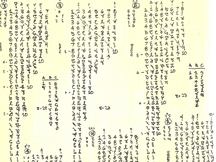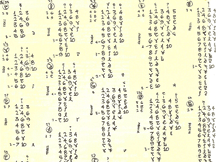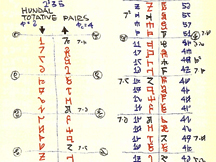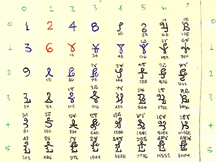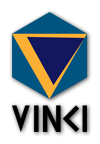 |
s7836The Rykami Argam Sketchbook |
The Book of Numerals
Of all the sketchbooks a perhaps-former artist could ever keep, the Book of Numerals has enjoyed the deepest impact in my life. Perhaps this is because many of the ideas borne within it, some useful, many not, were assembled and represented in the Book of Numerals.
New! In celebration of the decadal anniversary of the Book of Numerals, I have begun digitally recreating some of the charts and graphs through Wolfram Mathematica. The remastered content will appear at the foot of the pages to which they pertain. Since the new charts are fully algorithmic, they are quite flexible and will be applied to the future “Tour des Bases” project. These edits will take place over the coming weeks; in the menu below the remastered content page designation appears in green
In 1981, at age 10, the Apple ][+ introduced me to base 16, hexadecimal. As a middle school boy I was fascinated by the fact that we could write a number in base 16, have it look completely different, with letters serving as numerals, and still mean the same quantity as in decimal. As social conditions declined between me and my classmates, I began to encrypt my thoughts. Along with the learning of Greek and Russian alphabets in the seventh and eighth grades, I began to use alternative number bases to mask the numbers I wrote. Duodecimal proved better than hexadecimal for computation because common fractions terminated. By age 15, I had developed the tayya date system, a duodecimal count of days since 1 July 1970, using it in class notes and in sketchbooks.
Throughout my teen years I remained fascinated with number bases among other things, studying ever larger bases. Numerals for transdecimal bases were required; letters may be interesting as numerals but certainly not satisfactory. In the early 80s I borrowed the first two letters of a constructed alphabet for digits ten and eleven. The digit ten actually resembled a written "11" so I changed it to a 2 rotated 180°. At first, the digit twelve resembled a C, with the digits thirteen through fifteen being Hindu Arabic numberforms adapted to resemble the hexadecimal transdecimals. Later the digit twelve resembled Greek lowercase gamma written on the line mdash; a 6 with the involuted loop allowed to emerge and extend on the left equal to the riser on the right. This served as the nucleus of what would be the sixty-numeral argam arimaxa in 1992. After university, I used duodecimal to represent measurements in feet and inches, facilitating the arithmetic associated with dimension strings. This evolved into a method still used to represent dimensions in a three-digit mixed-radix called the taqga reneya (TAWNG-ga sheh-NAY-uh) one of the means by which I still produce construction visualization. Many of my childhood predilections, toward constructed languages, astronomy, melted away shortly after marriage.
The argam were retained and were reformed between November 2004 and mid 2006. This very different sketchbook records my discovery and innovations regarding number bases, spurred by a forum quest to build a case for duodecimal vs. decimal. The book is a travelogue not through a physical land or my own coming of age, but through a discovery in number. Elementary number theory continues to be one of my passions.
Material that appeared in this sketchbook and unattached scratch paper lead to the writing and production of a dozen major articles. Thoughts on the relationships of digits and bases, and their impact on multiplication tables appear at “Analysis of Multiplication Tables”, 1½ Mb PDF d872a. These relationships are the subject of “Digit Base Relationship”, exploring elementary number-theoretical relationships of digits to bases 2-120, 2 Mb PDF d87a9. I expanded this study to incorporate the effects of such relationships in the multiplication table, divisibility tests, and digital representation of fractions in the mid-2011 presentation “Digit Base Relationships (A Guide toward Measuring Radix Utility?)”, 11 Mb PDF d87b5. The neutral relationships are described and illustrated in “Neutral Digits”, 1.15 Mb PDF d8895, and material in the article “Exploring Number Bases as Tools”, published in the March 2012 edition of ACM-Inroads, a magazine of computer science education. The material has folded into the 2011 paper on merits of duodecimal, “Dozenal FAQs”, 5.6Mb PDF d8907. I've written many posts at DozensOnline over the years. Chief among these are < Dare I admit good things about Decimal? > dated 11 April 2011 (tayya 8752) available here→ , and < Number Base Theory 101 >, a thread initiated 10 October 2011 (tayya 8884) summarizing ideas here→ .
This work eventually led to authoring integer sequences beginning in summer 2014, as well as a continued interest in the elementary number-theoretical entities explored in its pages.
The Book of Numerals was handwritten in an acid-free leather-bound book acquired on an August 2005 visit to Gubbio, Umbria, Italy. The sketchbook was recently taken on the Grand Tour of 2019. Dr. Neil Sloane had written a sequence (Recamán’s sequence, A5132) and illustration in it, so as to explain illustration work I was executing at the time. This developed into a video according to Neil’s specification. Others who've seen the Book of Numerals include British author Alex Bellos (2008) and certain members of the construction industry. The work is dedicated to my wife.
This page last modified Sunday 16 October 2022.
